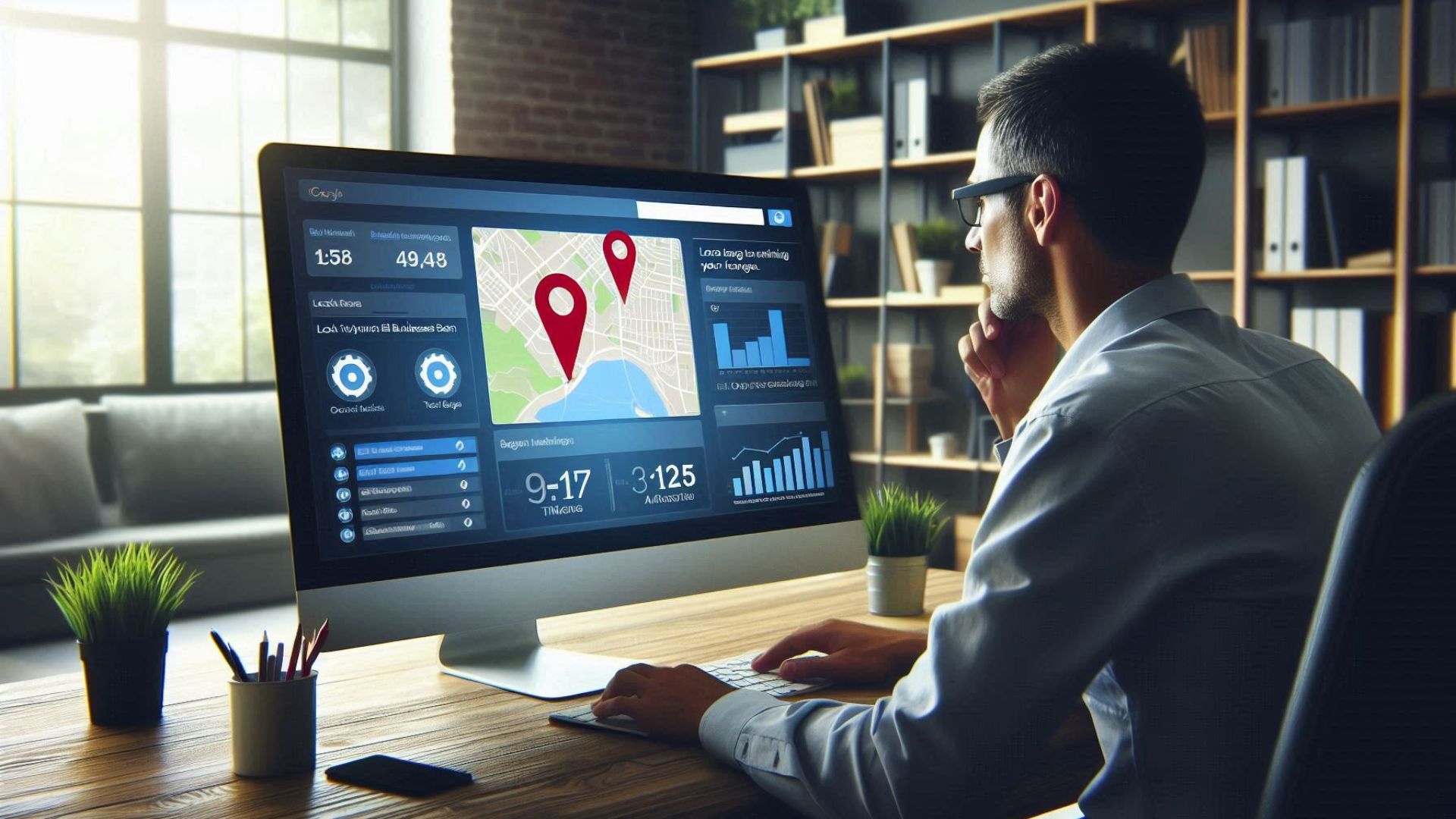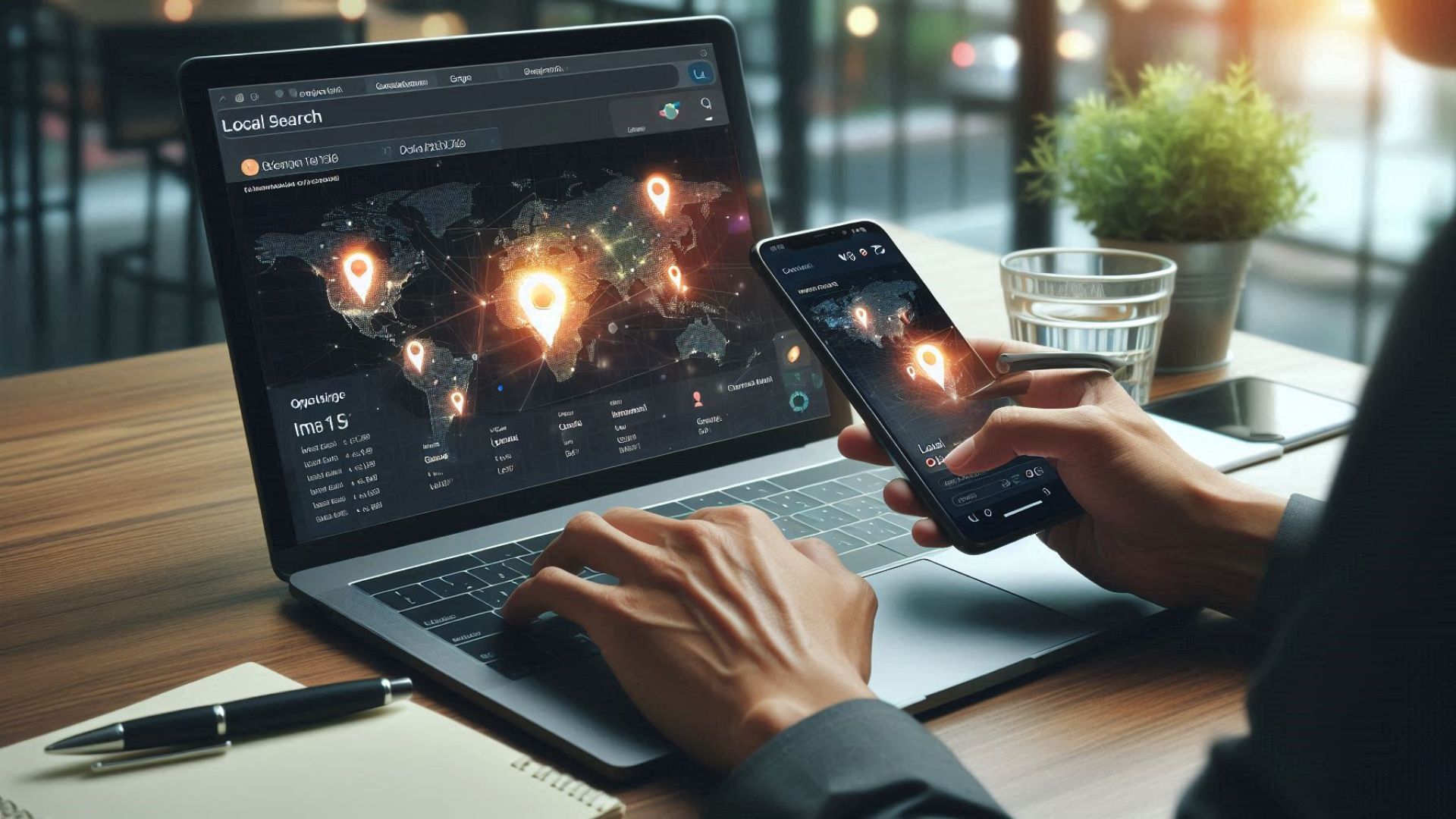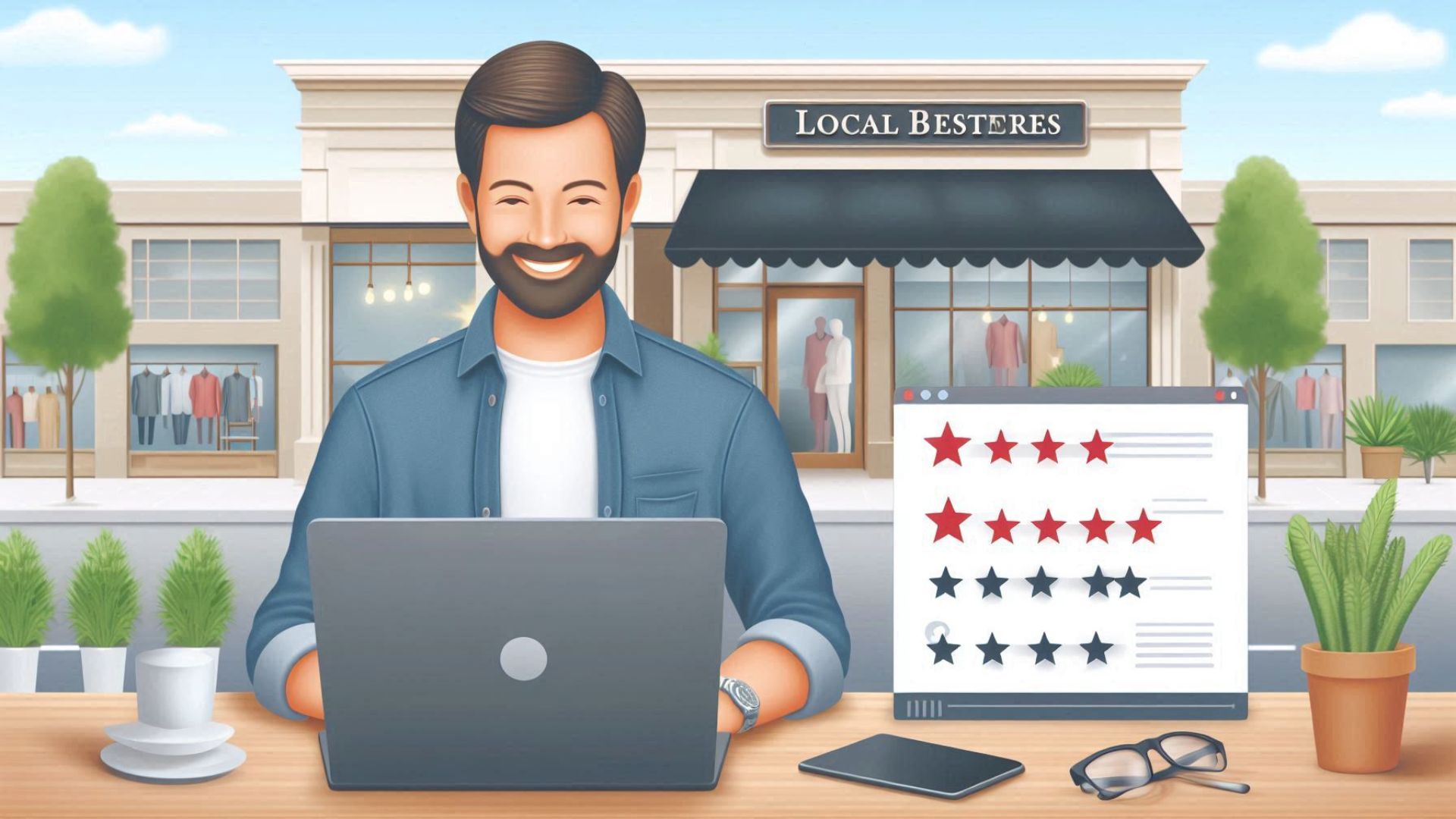What are the Best Practices for Local SEO?
Did you know that nearly 46% of all internet searches are local? To take advantage of this, your business needs to focus on local SEO. Local search engine optimization (SEO) is a powerful way to bring more traffic and sales to businesses of all sizes, not just smaller local ones. It’s one of the key factors that help your business rank higher on Google Search, Maps, and more.
When done right, local SEO can help your business attract customers naturally, without the need for expensive traditional ads.
What is Local SEO?

Local SEO (Search Engine Optimization) is all about improving your online presence so more people in your area can find your business when they search on Google. It uses different strategies to boost your website’s visibility in local search results, making it easier for potential customers nearby to discover what you offer.
Why is Local SEO Important?
Local SEO is one of the most powerful ways to drive traffic to your business. In fact, 50% of smartphone users visit a business within a day of searching locally. Whether you’re a small local shop or have multiple locations across the country, focusing on local SEO is essential to standing out from your competitors and boosting your business. Investing in local SEO gives you the tools and strategies to improve your online presence, attract the right visitors, and see real business growth, no matter the size or reach of your business.
What is an Example of Local SEO?
Local SEO works when someone searches for a service or product with a location-based query, like “plumber near me” or “coffee shop in Dallas.” In response, search engines like Google show a list of businesses that match the search and are located nearby.

Several factors influence these search results, such as how close the business is to the user, how relevant the business is to the search, and how strong its online presence is. By optimizing their websites, Google My Business listings, and other online profiles for local search, businesses can improve their chances of showing up in these results and attracting customers nearby.
How Does Local SEO Work?
When it comes to SEO and local SEO, there isn’t a perfect checklist for what you need to do to rank at the top. However, there are certain practices that can help improve your page rankings. There are best practices for both standard SEO and local SEO.
For local SEO, the ranking factors are more personal to your business. Some key factors include:
- A claimed and verified Google Business Profile
- Consistent and accurate business info (like name, address, and phone number – often called NAP)
- High-quality images and videos on your Google Business Profile
- Local content that speaks to community interests, events, and news
- Positive reviews from customers
This isn’t a full list, but it gives you an idea of the top local SEO ranking factors. Let’s imagine a local bakery wants to boost its local SEO rankings to attract more organic traffic.
The bakery owner would start by claiming and verifying their Google Business Profile. Then, they’d make sure their NAP info is correct and upload high-quality pictures of the bakery. The owner would also create local content, like blog posts about upcoming community events where their bakery will be featured. Lastly, they’d encourage happy customers to leave positive reviews, so potential customers can see how great the bakery is.

Also Read: How do I Track My Local SEO Performance?
How Long Does a Local SEO Strategy Take?
The timeline for seeing results from local SEO can vary based on a few factors, like how competitive your industry is, the quality of your efforts, and the specific strategies you’re using. In general, you might start noticing improvements in your local search rankings anywhere from a few weeks to several months.

If your business is in a less competitive industry or a smaller area, you might see results quicker—often within just a few weeks. This could show up as higher local search rankings, more website traffic, and greater visibility in local search results.
However, if you’re in a more competitive industry or a larger area, it might take longer to see noticeable results. In these cases, it could take several months of consistent work—like optimizing your website, creating content, building citations, and other strategies—before you start seeing big improvements in your local rankings and online visibility.
Keep in mind that local SEO is an ongoing process. While you may see some results in the first few weeks or months, the real benefits will come over time as you continue to grow your online presence, attract more local customers, and build your business’s reputation as a trusted authority in your community.
Local SEO Tips & Strategies
While we’ve already covered the basics of local SEO—like optimizing your Google Business Profile, creating local content, and asking for reviews—there are some additional strategies you can use to make the most of those tips and boost your success.
Local Content Marketing Strategy
Local content marketing is about creating and sharing content that connects with your local audience. This strategy helps position your business as a valuable resource in the community while also improving your visibility in local search results. Here’s how to make the most of local content marketing:
- Understand Your Local Audience
Start by researching your community to get a sense of what interests, needs, and questions your audience has.
Find out what they’re searching for or struggling with online. - Create Localized Content
Develop content that speaks to your local audience, like guides to local attractions, events, or hidden gems in the area.
Use Google Posts to share updates, special offers, or event announcements.
Add local keywords naturally into your content to help it show up in local search results.
Use storytelling to make your content more relatable and interesting for local readers. - Promote Your Content Locally
Share your content on local social media channels, community forums, and neighborhood groups to get more visibility.
Work with other local businesses to cross-promote each other’s content.
Sponsor local events or community initiatives to boost your content’s exposure. - Engage with Your Audience
Keep an eye on comments, shares, and feedback, and make sure to respond quickly to engage your audience.
Encourage user-generated content by hosting contests, challenges, or events where your audience can share their experiences.
Use feedback from your audience to inspire new content ideas that will keep your business relevant and valuable in your community. - Track and Measure Results
Use analytics tools to track how your content is performing—look at things like website traffic, engagement, and conversions.
Keep an eye on changes in local search rankings to see how your content is impacting your local SEO.
Adjust your strategy based on the results to keep improving and achieving success.

Also Read: How do I Optimize My Website for Local Searches?
Local Link Building Strategy
Local link building is about earning backlinks from local websites that are relevant to your business. These backlinks improve your site’s authority and show search engines that your business matters in local searches.
- Identify Local Link Opportunities
Look for local businesses, organizations, and community sites that relate to your industry or target audience.
Seek opportunities to collaborate or contribute content, like guest blogging, sponsoring local events, or getting involved in community charity initiatives. - Create Linkable Assets
Make high-quality content that’s valuable and shareable, so other local websites will want to link to it.
Examples of linkable content include guides, infographics, case studies, or local resource directories. - Reach Out to Local Websites
Send personalized emails to local websites, introducing yourself and your business, and explaining how your content or expertise can benefit their audience.
Be clear, polite, and to the point. If you don’t hear back right away, send a friendly follow-up reminder, but avoid being pushy. - Build Relationships with Local Influencers
Find local influencers, bloggers, or journalists who cover topics related to your business.
Engage with them on social media, comment on their blog posts, and share their content to start building a relationship.
Once you’ve built trust, pitch them your content as a useful resource for their audience and ask if they would consider linking to it. - Monitor and Maintain Your Backlink Profile
Keep track of the backlinks you’ve earned and check their status regularly.
If any backlinks need to be removed or updated, take action quickly to keep your backlink profile healthy.
Continue looking for new link opportunities and adapt your outreach efforts as your industry or community evolves.
While this isn’t an exhaustive list of all local SEO strategies, it gives you a good sense of how more advanced techniques can help your business succeed. By implementing these tactics, you can boost your local SEO and stand out in your community.
Features to Look for in Local SEO Software
When choosing local SEO software for your business, it’s important to pick one that fits your goals. There are lots of features to choose from, but here are some key ones to look for:

- Local Business Listing Management: This helps you manage your business information across local directories, review sites, and other online platforms to make sure your details are accurate and up-to-date.
- Streamlined Google Posts: Managing Google Posts for multiple locations can be tricky. Look for a tool that lets you easily create and manage Google Posts in one place while also handling your business listings.
- Review Monitoring and Management: These tools help you keep track of customer reviews across different review sites, allowing you to respond quickly and keep your online reputation in check.
- Geotargeting Capabilities: Features that let you target specific geographic areas with your SEO efforts. For example, you can create location-based landing pages or target ads to users in certain areas.
- Local Rank Tracking: These tools help you track your local search rankings for important keywords, so you can see how you’re doing compared to competitors in your area.
- Reporting and Analytics: Look for software that gives you detailed reports and analytics on your local SEO performance, covering things like visibility, traffic, conversions, and ROI.
By focusing on these features, you’ll be better equipped to boost your business’s local SEO and achieve your marketing goals.
What is the Difference Between SEO and Local SEO?
The biggest difference between SEO and local SEO is who they target and where. Both help improve a website’s visibility in search results, but SEO focuses on a broader audience—national or even global—while local SEO is all about reaching customers in a specific area. Here’s a breakdown of how they differ:

SEO (Search Engine Optimization)
- SEO is about getting a website to rank higher in search results on a national or global scale.
- It helps attract visitors searching for relevant keywords, no matter where they are.
- Common SEO strategies include optimizing website content, improving site navigation, earning backlinks, and enhancing user experience to boost rankings.
Local SEO
- Local SEO is designed to help businesses attract nearby customers who are searching for products or services in their area.
- The goal is to show up in local search results, especially in Google’s local pack (the map listings).
- Key strategies include optimizing your Google My Business profile, creating local content, building citations in online directories, managing customer reviews, and using location-specific keywords.
Local SEO is especially useful for businesses with physical locations, like stores, restaurants, and service providers, since it helps connect them with people who are ready to visit or make a purchase.

Also Read: What are the Most Common Local SEO Mistakes to Avoid?
What Does Local SEO Have to Do With Reputation Management?
Local SEO and online reputation management go hand in hand because both help shape a business’s online presence and influence how customers see it. Here’s how they connect:

Online Reviews
Customer reviews—especially on Google—affect both local SEO and reputation. Good reviews boost search rankings and show potential customers that people trust your business. On the other hand, bad reviews can hurt both your visibility and reputation. That’s why it’s important to monitor and respond to reviews, whether they’re positive or negative.
Google Business Profile
Your Google Business Profile (GBP) is key for local SEO because it helps your business show up in local search results. But it’s also where customers leave reviews, ask questions, and interact with your business. Keeping your profile updated, responding to reviews, and posting updates help improve both your local SEO and reputation.
Local Citations & Directories
Having consistent business information across online directories and review platforms helps search engines trust your business, improving your local rankings. But these listings also act as customer touchpoints, where people leave reviews and ratings that impact your reputation. Keeping your business details accurate across all platforms is essential for both SEO and reputation management.
Local Content & Social Proof
Creating location-specific content helps your business connect with local customers while also boosting search rankings. Social proof—like customer testimonials and case studies—adds credibility and builds trust. Both are crucial for attracting more customers and improving your reputation.




Post Comment